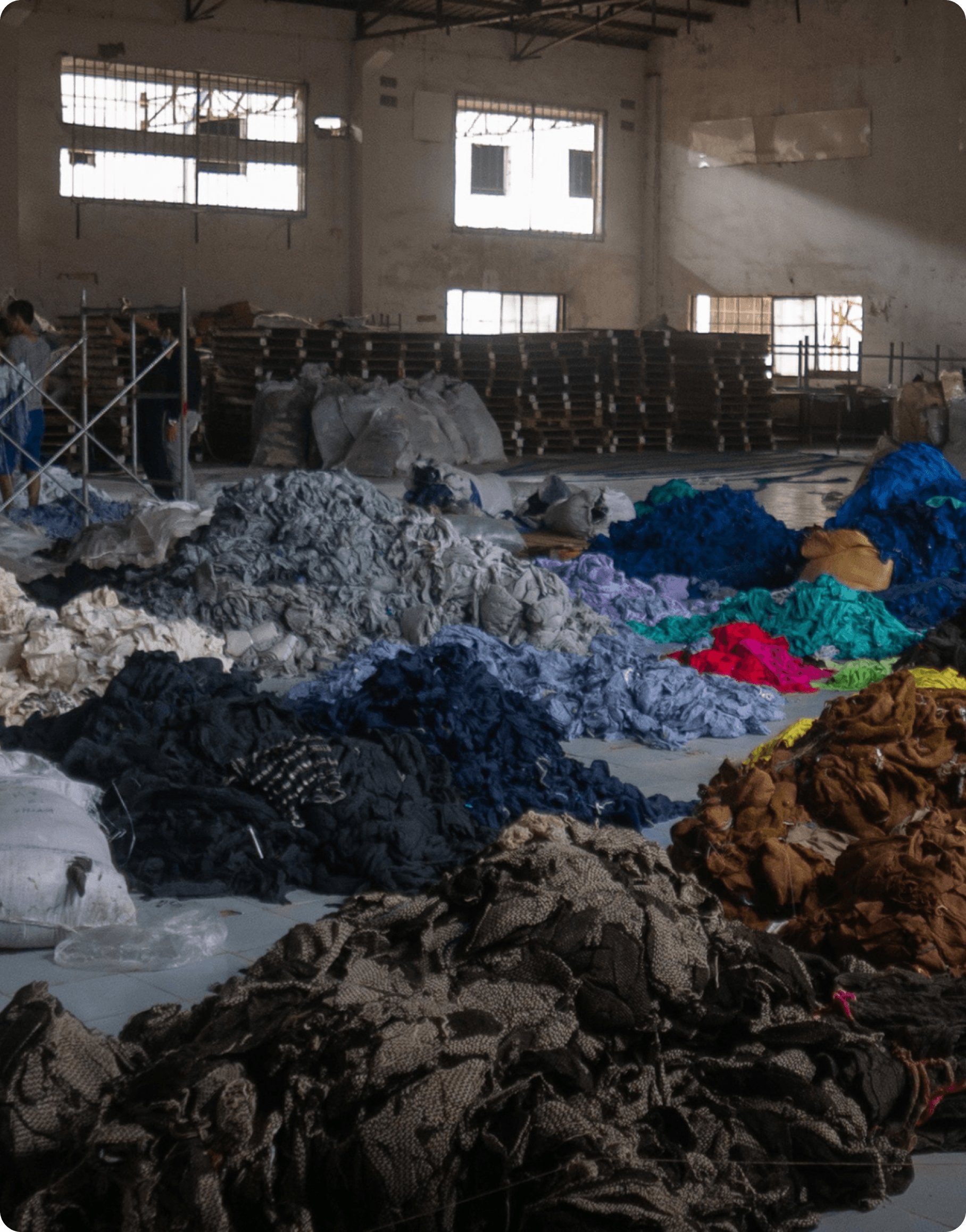
Our Impact
Building platforms for fashion's circular future.
The fashion industry generates billions of metric tons of CO2 emissions annually.
Vega™ proposes to eliminate those tons by the millions.
The problem is obvious
Our Earth is overheating. And the fashion industry contributes up to 10% of global carbon emissions annually. Why?
Business as usual in fashion is a massive waste. It means squandering scraps of fabric when making garments. It means making too many of those garments and disposing of what isn’t sold. It even means making garments to be disposable, thrown in the bin at the end of their use. All while burning fossil fuels to power a labyrinthine global supply chain.
This isn’t viable for the planet. Nor is it compliant with forthcoming legislation. As our physical and legal environments rapidly change, apparel brands and manufacturers need a new way of doing business.

It's time to change the world. A typical pair of pants requires a lot of resources. In contrast, a pair of cotton pants made on demand with Vega™, our 3D weaving tech, has a...
Reduced global warming potential of 53%
Reduced primary energy demand of 49%
Reduced blue water consumption of 39%
To gather this data, we commissioned a Life Cycle Assessment (LCA) to quantify the effect that Vega™ has on climate change. An LCA is a measurement of the resources and energy required to manufacture a product, from the cultivation or synthesis of raw materials used to make it, to the moment it’s delivered to the customer.
Our LCA compares the environmental impact of two pairs of pants. One is made with an air-jet weaving machine and follows the typical fashion supply chain. This is a baseline. The other is made with a Vega™ 3D weaving machine and follows the Vega™ supply chain. This is the goal line.
Download the full LCA report here.
How does Vega™ have such an impact?

Vega™ will redefine reuse.
Changing the world opens new possibilities. Introducing: hyper-circularity.
Currently, when a garment is no longer worn, it most often becomes rubbish. If clothing is recycled or downcycled, ultimately the original fabric is converted to fibers or pellets and lost. A garment’s life is linear.
By 3D weaving a garment, Vega™ reconceptualizes how it can be salvaged: by converting fabric back to its constituent yarns. When a garment is no longer worn, it can be unwoven so that it may eventually be woven again into a new garment. Here, a garment’s life is circular.
Achieving circularity will further minimize the fashion industry’s climate impact. For the more yarn the industry reuses, the less post-consumer waste it will generate, and the fewer resources it will devote to harvesting virgin raw materials.
That’s what we mean by unspun.
unspun is B Corp™ Certified
Thanks to the relentless vision of our founders and commitment of our team, we can proudly say that we are part of the B Corp™ community.
The Bcorp community works toward reduced inequality, lower levels of poverty, a healthier environment, and stronger communities across multiple industries. Today, we're one of less than 300 fashion brands globally that has achieved this certification.
We’re far from perfect. But, we’re striving to be not only better, but GOOD. Access our impact dashboard here.

Learn more about our
Stories
